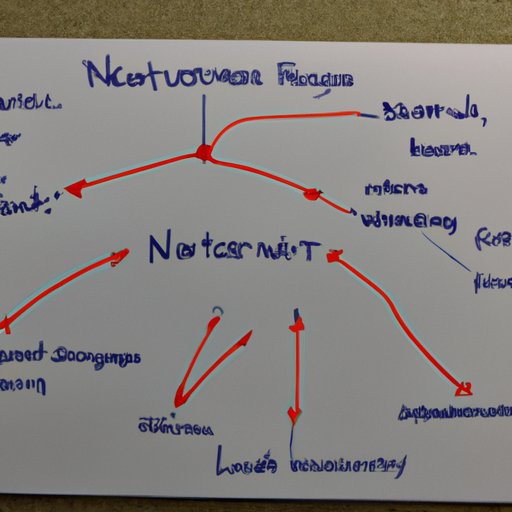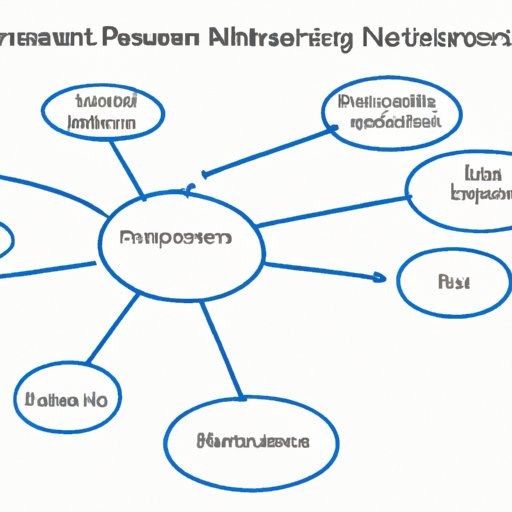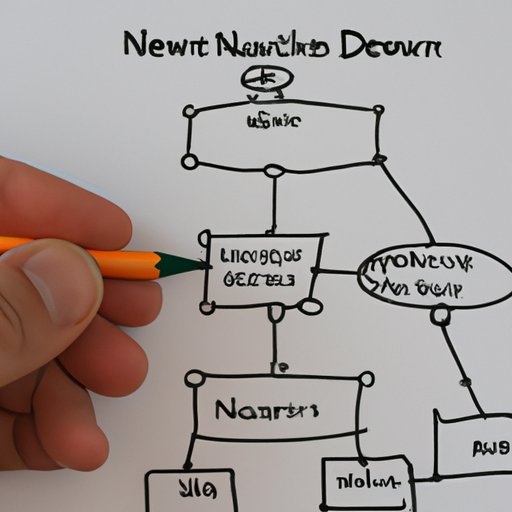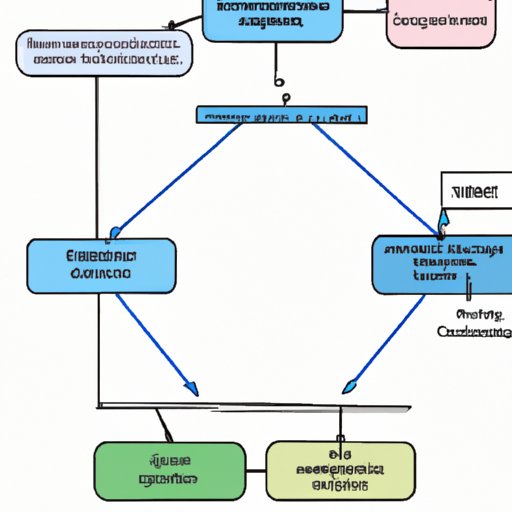Introduction
Network architecture is the design of a computer network, which includes the hardware, software, protocols, and media used to connect computers and other devices. It is important for IT professionals to understand network architecture in order to be able to design, deploy, and manage efficient networks.

Exploring the Basics of Network Architecture
When it comes to network architecture, there are several key components that must be considered. These include types of network topologies, different network protocols, and the types of devices used in a network.
Types of Network Topologies
The topology of a network is the physical or logical layout of connected nodes. There are three main types of network topologies: bus, star, and ring. In a bus topology, all nodes are connected to a single cable, while in a star topology, each node is connected to a central hub. In a ring topology, each node is connected to two other nodes, forming a closed loop.
Different Network Protocols
Network protocols are sets of rules and standards that govern how data is exchanged between computers. Common network protocols include TCP/IP, Ethernet, and Wi-Fi. TCP/IP stands for Transmission Control Protocol/Internet Protocol and is the most widely used protocol for connecting computers to the internet. Ethernet is a local area network (LAN) protocol that enables computers to communicate with each other over short distances. Wi-Fi is a wireless networking technology that allows devices to connect to a network without the need for cables.
Types of Devices Used in Network Architecture
There are several types of devices used in network architecture. These include firewalls, routers, switches, access points, servers, and storage systems. Firewalls are used to prevent unauthorized access to a network. Routers direct traffic between different networks. Switches are used to connect multiple devices within a network. Access points provide wireless connectivity. Servers store and process data. Storage systems are used to store data.
Understanding the Different Types of Network Architectures
When designing a network, it is important to consider the type of network architecture that will be used. There are three main types of network architectures: client/server, peer-to-peer, and hybrid. In a client/server architecture, clients make requests to a server, which then processes the request and sends a response back to the client. In a peer-to-peer architecture, each node can act as both a client and a server. In a hybrid architecture, some nodes act as clients while others act as servers.

The Benefits of Implementing a Network Architecture
Implementing a network architecture can have many benefits, including increased efficiency, improved security, and cost savings. By having an organized and secure network, organizations can minimize downtime and maximize productivity. Additionally, by utilizing quality network devices and standard network protocols, organizations can reduce their costs associated with network maintenance and troubleshooting.
The Components of a Network Architecture
When designing a network architecture, there are several components that must be taken into consideration. These include firewalls, routers, switches, access points, servers, and storage systems. Firewalls are used to protect a network from unauthorized access. Routers are used to direct traffic between different networks. Switches are used to connect multiple devices within a network. Access points provide wireless connectivity. Servers are used to store and process data. Storage systems are used to store data.

How to Design a Network Architecture
Designing a network architecture requires careful planning and consideration. The first step is to establish goals and objectives for the network. Next, a network diagram should be created to visualize the layout of the network. Once the diagram has been created, appropriate network devices should be chosen based on the needs of the network. Finally, network security policies should be defined to ensure the security of the network.
Network Architecture Best Practices
When implementing a network architecture, there are several best practices that should be followed. These include utilizing standard network protocols, using quality network devices, and securing the network. Using standard protocols helps ensure compatibility between different devices and applications. Quality network devices ensure reliability and performance. Finally, it is important to secure the network with firewalls and other security measures.
Common Challenges in Network Architecture Design
Designing a network architecture can present several challenges. Keeping up with technology changes can be difficult, as new technologies and protocols are constantly being introduced. Ensuring reliability and availability of the network is also a challenge. Finally, managing network security can be difficult, as malicious actors are always looking for ways to exploit weaknesses in the system.
Conclusion
Network architecture is the design of a computer network, which includes the hardware, software, protocols, and media used to connect computers and other devices. Understanding network architecture is important for IT professionals in order to design, deploy, and manage efficient networks. Implementing a network architecture can have many benefits, including increased efficiency, improved security, and cost savings. When designing a network architecture, there are several components to consider and best practices to follow. Common challenges in network architecture design include keeping up with technology changes, managing network security, and ensuring reliability and availability.
(Note: Is this article not meeting your expectations? Do you have knowledge or insights to share? Unlock new opportunities and expand your reach by joining our authors team. Click Registration to join us and share your expertise with our readers.)
